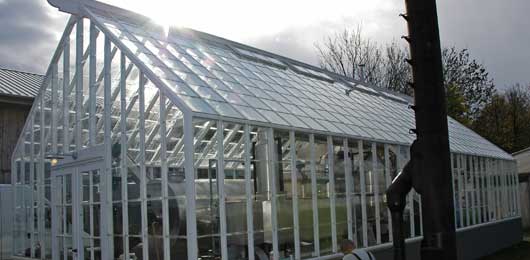The Association for the Study of Peak Oil and Gas, or ASPO,
is a network of scientists, affiliated with a wide array of global
institutions and universities, whose goal is to attempt to determine the
date and impact of the peak and decline of the world’s production of
oil and gas, due to resource constraints.[1]
ASPO was founded by Colin Campbell in 2000. It is the most influential organization supporting the "peak oil" theory, meaning that future oil supply will be much less than commonly expected. Their studies use the Hubbert curve, devised by M. King Hubbert,
among many other methods to which predict future oil availability. It
is a common misunderstanding to believe that ASPO and peak oil only is
about the Hubbert curve.http://en.wikipedia.org/wiki/Association_for_the_Study_of_Peak_Oil_and_Gas
Submitted by Tom Miles on
World premiere of a pyrolysis plant combined with a Stirling engine
Danish Stirling, October 24, 2008
 Aarstiderne
Aarstiderne
On October 24th the Danish Minister for the Environment Troels Lund Poulsen officially inaugurated the new pyrolysis plant at Barritskov Gods supplied by Stirling Denmark. The plant is the worlds first pyrolysis plant based on a Stirling engine and will provide heat and power to the facilities. Furthermore, the plant will produce a valuable charcoal for soil improvement and CO2 sequestration. The plant has been designed by Stirling Denmark based on the SD4 engine and on research on pyrolysis at DTU, Denmark. The plant will initially run on wood chips from recycled wooden crates, but the plant is expected to be able to handle many different types of biomass.
See more at Aarstiderne and also (video) http://www.dr.dk/odp/player.aspx?uniqueid=309067&mt=newstab&st=news_TVAv...
(both in Danish)
Aarstinderne as translated to English using Google.
http://www.stirling.dk/
Danish Stirling, October 24, 2008
 Aarstiderne
AarstiderneOn October 24th the Danish Minister for the Environment Troels Lund Poulsen officially inaugurated the new pyrolysis plant at Barritskov Gods supplied by Stirling Denmark. The plant is the worlds first pyrolysis plant based on a Stirling engine and will provide heat and power to the facilities. Furthermore, the plant will produce a valuable charcoal for soil improvement and CO2 sequestration. The plant has been designed by Stirling Denmark based on the SD4 engine and on research on pyrolysis at DTU, Denmark. The plant will initially run on wood chips from recycled wooden crates, but the plant is expected to be able to handle many different types of biomass.
See more at Aarstiderne and also (video) http://www.dr.dk/odp/player.aspx?uniqueid=309067&mt=newstab&st=news_TVAv...
(both in Danish)
Aarstinderne as translated to English using Google.
http://www.stirling.dk/